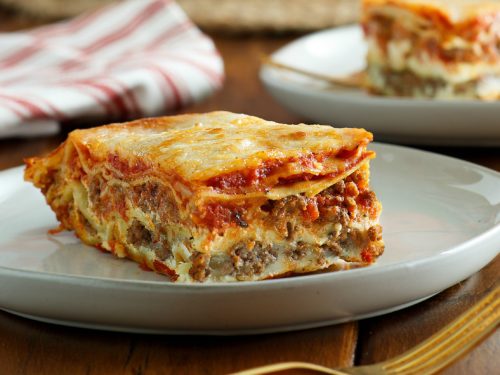In this article, we will explore the nutritional benefits and health considerations of two popular food staples: rice and fries. By comparing their nutritional profiles, we aim to help you make an informed choice that aligns with your health goals.
Key Takeaways:
- Rice provides carbohydrates, fiber, vitamins, and minerals, making it a versatile and nutritious choice.
- Fries are often high in calories and fat, with low nutrient content, increasing the risk of obesity and heart disease.
- Consider your personal preference, moderation, and overall dietary needs when deciding between rice and fries.
- Quinoa and sweet potato fries are healthier alternatives to add variety and nutrition to your meals.
- Remember to make conscious choices and practice moderation to maintain a balanced diet.
The Nutritional Benefits of Rice
Rice is a versatile grain that offers numerous nutritional benefits. It is a rich source of carbohydrates, which provide essential energy for our bodies. In fact, rice is one of the primary sources of energy for a large portion of the world’s population. The carbohydrates in rice are easily digestible, making it a quick and efficient fuel source.
In addition to carbohydrates, rice also contains dietary fiber. Fiber is crucial for maintaining proper digestion and promoting a healthy digestive system. It aids in preventing constipation and maintaining bowel regularity. The fiber content in rice varies depending on the type, with brown and wild rice containing more fiber than white rice.
Rice is not only a great source of energy and fiber but also contains essential vitamins and minerals. It is particularly rich in B vitamins, such as thiamin, niacin, and vitamin B6, which play a vital role in metabolism and maintaining a healthy nervous system. Rice also provides minerals like magnesium, phosphorus, and selenium, which are essential for bone health, energy production, and antioxidant defense.
| Nutrient | White Rice (1 cup/185g) | Brown Rice (1 cup/195g) | Wild Rice (1 cup/164g) |
|---|---|---|---|
| Carbohydrates (g) | 45 | 45 | 35 |
| Fiber (g) | 1 | 3.5 | 3 |
| Thiamin (mg) | 0.07 | 0.31 | 0.45 |
| Niacin (mg) | 1.7 | 3.8 | 3.8 |
| Vitamin B6 (mg) | 0.2 | 0.6 | 0.4 |
| Magnesium (mg) | 19 | 83 | 144 |
| Phosphorus (mg) | 68 | 162 | 166 |
| Selenium (mcg) | 20.7 | 19.1 | 24.5 |
It’s important to note that the nutritional content of rice can vary depending on the cooking method and portion size. While rice offers several nutritional benefits, it’s always advisable to incorporate it as part of a well-balanced diet that includes a variety of other foods as well.
The Nutritional Profile of Fries
When it comes to the nutritional profile of fries, it’s important to note that they are generally high in calories and fat, making them a less nutritious option compared to other foods. Fries are often deep-fried, which further increases their calorie and fat content. Regular consumption of fries can contribute to weight gain and an increased risk of obesity.
Fries are also typically low in nutrients such as vitamins and minerals. They are not a significant source of dietary fiber either. The cooking method and added ingredients, such as salt or seasoning, can further affect the nutritional value of fries.
To provide a clear comparison, let’s take a look at the nutritional values of a serving of fries:
| Nutrient | Amount per Serving |
|---|---|
| Calories | Approximately 365 |
| Total Fat | Approximately 17 grams |
| Saturated Fat | Approximately 3 grams |
| Sodium | Approximately 307 milligrams |
| Carbohydrates | Approximately 48 grams |
| Dietary Fiber | Approximately 4 grams |
| Protein | Approximately 4 grams |
As you can see, fries are high in calories and fat, while providing limited amounts of important nutrients. It’s important to keep these factors in mind when considering them as part of your diet.
Health Considerations of Rice Consumption
When it comes to health considerations, rice has several advantages. Firstly, rice is naturally gluten-free, making it an excellent choice for individuals with gluten sensitivities or celiac disease. This means that rice can be enjoyed by a wider range of people without causing any adverse reactions. Additionally, rice is low in sodium and cholesterol, which can be beneficial for heart health. By incorporating rice into your diet, you can maintain healthy blood pressure levels and reduce the risk of heart disease.
It is important to note that the impact of rice on blood sugar levels may vary depending on the type of rice and portion size. While white rice is known to have a higher glycemic index, causing a more significant spike in blood sugar, brown rice and other whole grain varieties are typically lower in the glycemic index. It is recommended to opt for these whole grain options and practice portion control to better manage blood sugar levels.
To summarize, rice offers various health considerations such as being gluten-free, low in sodium, and cholesterol-free. However, it is essential to choose whole grain varieties and control portion sizes to minimize any potential impact on blood sugar levels.
Health Considerations of Rice Consumption
| Health Considerations | Description |
|---|---|
| Gluten-Free | Rice is naturally gluten-free, making it suitable for individuals with gluten sensitivities or celiac disease. |
| Low in Sodium | Rice is low in sodium, which can help maintain healthy blood pressure levels and reduce the risk of heart disease. |
| Cholesterol-Free | Rice is free of cholesterol, making it a heart-healthy food choice. |
| Impact on Blood Sugar | The impact of rice on blood sugar levels may vary depending on the type of rice and portion size. Choosing whole grain varieties and practicing portion control is recommended. |
Health Considerations of Fries Consumption
When it comes to fries, it’s important to be aware of their impact on our health. While they may be a beloved indulgence, regular consumption of fries can have certain health considerations that we should keep in mind.
Fries are often high in calories, making them a potential contributor to weight gain if consumed in large portions or frequently. The frying process itself can also lead to an increase in saturated fat content, which is associated with an increased risk of heart disease.
Additionally, fries typically have a low nutrient content compared to other food options like rice. They may not provide the essential vitamins and minerals that our bodies need to function optimally. This can be particularly concerning if fries become a regular part of our diet, as we may be missing out on important nutrients.
| Health Considerations of Fries Consumption | |
|---|---|
| High in calories | Frequent consumption can contribute to weight gain. |
| High in saturated fat | Associated with an increased risk of heart disease. |
| Low nutrient content | May lack essential vitamins and minerals. |
Considering these health considerations, it’s important to enjoy fries in moderation and be mindful of our overall dietary choices. By balancing our meals and incorporating more nutrient-dense options, we can still enjoy the occasional treat without compromising our health.
Making a Decision: Rice or Fries?
When it comes to deciding between rice and fries, the choice ultimately depends on personal preference and individual dietary needs. While rice offers more nutritional benefits, fries can still be enjoyed as an occasional treat. It’s essential to practice moderation and make conscious choices based on your overall diet and health goals.
Rice has several advantages when it comes to making a healthy decision. It is a versatile grain that provides carbohydrates, fiber, and essential nutrients. However, the impact on blood sugar levels may vary depending on the type of rice and portion size. Additionally, rice is naturally gluten-free, making it suitable for individuals with gluten sensitivities or celiac disease. It is also low in sodium and cholesterol, which can be beneficial for heart health.
On the other hand, fries should be consumed in moderation due to their high calorie and fat content. Regular consumption of fries may contribute to weight gain and an increased risk of obesity. Fries are often deep-fried, which further adds to their calorie content. While fries may not offer the same nutritional benefits as rice, they can still be enjoyed as an occasional indulgence.
Factors to Consider:
- Personal preference: Consider your taste preferences and cravings when making a choice between rice and fries.
- Dietary needs: Take into account any dietary restrictions or health conditions that may influence your decision.
- Moderation: It’s important to practice moderation with both rice and fries. Incorporate them into your diet in appropriate portion sizes.
| Rice | Fries |
|---|---|
| Provides carbohydrates, fiber, and essential nutrients | High in calories and fat |
| Naturally gluten-free | Deep-fried, adding to calorie content |
| Low in sodium and cholesterol | May contribute to weight gain and obesity |
Ultimately, the decision between rice and fries should be based on a balance of personal preference, moderation, and overall dietary needs. Incorporate both options into your diet mindfully, ensuring that you consider their nutritional content and make choices that align with your health goals.
Healthy Rice and Fries Alternatives
If you’re looking for healthier alternatives to rice or fries, there are several options that can add variety to your meals while offering a more nutrient-dense choice. Consider incorporating quinoa into your diet as a substitute for rice. Quinoa is a versatile grain-like seed that is high in protein and fiber, making it a great choice for those seeking a nutritious option. It also contains essential amino acids, vitamins, and minerals.
Another alternative to traditional fries is sweet potato fries. Sweet potatoes are rich in vitamins A and C, as well as fiber, and they have a lower glycemic index compared to regular potatoes. By baking or air frying sweet potato slices, you can enjoy delicious and healthier fries that are lower in calories and provide additional nutrients.
It’s important to note that while these alternatives can be a nutritious choice, portion control is still key. Incorporate these alternatives into a well-balanced diet and enjoy them in moderation. By making conscious choices about what we eat, we can take positive steps towards maintaining a healthy lifestyle.
| Alternative | Nutrition Benefits |
|---|---|
| Quinoa | High in protein and fiber, contains essential amino acids, vitamins, and minerals |
| Sweet Potato Fries | Rich in vitamins A and C, lower in calories than regular fries, provides additional nutrients |
Conclusion
In conclusion, when considering the choice between rice and fries, it is important to weigh their nutritional benefits and health considerations. Rice, a versatile grain, offers carbohydrates, fiber, and essential nutrients, making it a healthier option overall. On the other hand, fries, with their high calorie and fat content, lack substantial nutrients.
However, the decision ultimately depends on personal preference and moderation. While rice provides more nutritional benefits, fries can still be enjoyed as an occasional treat. It is crucial to make conscious choices based on your overall diet and health goals.
For those seeking healthier alternatives, options like quinoa or sweet potato fries can provide more nutrient-dense choices. Quinoa is high in protein and fiber, while sweet potato fries offer additional nutrients and fewer calories. Incorporating these alternatives can add variety to your meals while maintaining a healthier balance.
Remember, making dietary decisions should be done with careful consideration and an understanding of your individual needs. By choosing foods that offer nutritional benefits and practicing moderation, you can ensure a balanced and healthy approach to your diet.
FAQ
Is rice healthier than fries?
Rice offers more nutritional benefits, such as carbohydrates, fiber, and essential nutrients, compared to fries, which are often high in calories and fat with low nutrient content. However, the choice ultimately depends on personal preference and moderation.
Can rice be part of a gluten-free diet?
Yes, rice is naturally gluten-free, making it suitable for individuals with gluten sensitivities or celiac disease.
Do fries contribute to weight gain?
Regular consumption of fries, which are high in calories and saturated fat, may contribute to weight gain and an increased risk of obesity.
Are there healthier alternatives to rice and fries?
Yes, alternatives like quinoa, which is high in protein and fiber, or sweet potato fries, which are lower in calories and provide additional nutrients, can be considered as healthier options.
How should I make a decision between rice and fries?
The decision should be based on personal preference, moderation, and overall dietary needs.



